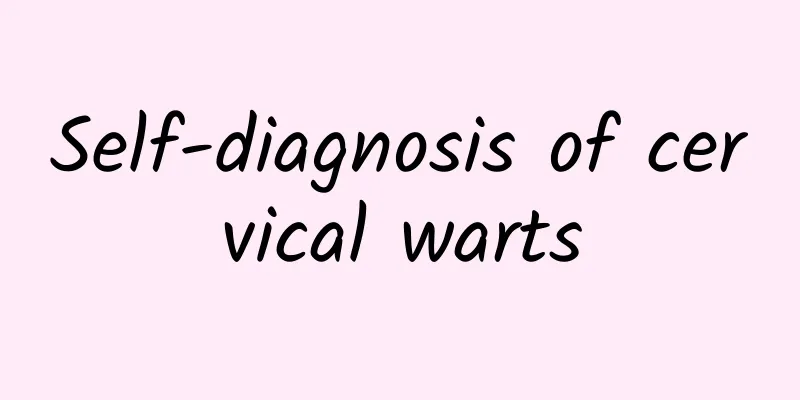What are the dangers of abortion for women? Five key points for women to pay attention to after abortion

|
In modern society, people's minds are becoming more and more open, and there are more and more unmarried men and women living together, which leads to an increase in the number of women who have unexpected pregnancies. Unexpected pregnancies bring a lot of inconveniences to life and work, so many people choose to have an abortion. Although an abortion is a minor operation, it has a great impact on women's health. So, what are the dangers of having an abortion for women? How to maintain health after an abortion? What are the dangers of abortion for women? 1. Endometriosis Repeated suction of uterine cavity contents may cause adhesion of the uterine cavity and cervical canal, and may also cause intrauterine blood accumulation or menstrual blood to flow back into the abdominal cavity, causing endometriosis and cyclical lower abdominal pain. 2. Long-term complications Such as chronic pelvic inflammatory disease, abnormal menstruation, secondary infertility, and endometriosis. 3. Uterine perforation, life-threatening During pregnancy, the uterine wall becomes soft and thin. Multiple pregnancies and multiple abortions can easily pierce the soft and thin uterine wall, causing uterine perforation and endangering life. 4. Complications during subsequent pregnancy Infertility, high rates of late miscarriage, high rates of premature birth, high perinatal mortality, increased rates of antepartum and postpartum bleeding, and increased neonatal hemolytic disease. 5. Amenorrhea Continuous abortions will damage the basal layer of the endometrium repeatedly, causing the functional layer to be unable to grow again. At this time, although the ovaries are fully functional and ovulate on time every month, the functional layer of the endometrium cannot regenerate after shedding, so menstruation will not occur, resulting in amenorrhea. 6. Dystocia and retained placenta during subsequent pregnancy Repeated abortions often require scraping of the endometrium. The more times the scraping is done, the more damage the endometrium suffers. When you want to get pregnant again, placenta implantation and adhesion are more likely to occur, resulting in dystocia and retained placenta. How to maintain after abortion? 1. Maintain a regular life Even if the abortion is successful, if you do not have a regular life after the abortion, it will increase bleeding or leave sequelae. You can rest in the hospital for a day or go home after the abortion. You need to go to the hospital for observation and treatment in the following days and ensure adequate rest. 2. Nutritional supplement After an artificial abortion, you should eat a nutritious and balanced diet to nourish your body and make it recover quickly. You can eat more meat, eggs, milk, beans, whole grains, and fresh vegetables to supplement the protein, folic acid, vitamins and other substances needed for recovery and promote your body to recover as soon as possible. 3. Adjust your mentality Termination of pregnancy is generally a very guilty thing for women, which often causes psychological trauma and even lifelong self-blame. Therefore, the man and his family should be more considerate and caring after the operation. I also need to constantly enlighten myself that since I have decided to terminate the pregnancy, I should not regret or blame myself, turn the page, take good care of myself, and start over. 4. Take some rest After an artificial abortion, the state stipulates that the family planning leave is 2 weeks. During these two weeks, try to stay in bed, sleep more, and move less. There will be bleeding during the operation, and the uterus will have a wound, which is a big trauma to the body. Therefore, you need to rest well to recover. Be careful not to engage in heavy physical labor and high-intensity activities within one month. 5. Pay attention to hygiene After an artificial abortion, the cervix is open, and bacteria and viruses can go directly up to the uterine cavity through the vagina and cervix, which can easily cause vaginal infection, cervical infection, and uterine cavity infection. Due to the special anatomical relationship of women, it can also cause fallopian tube inflammation, pelvic inflammatory disease, peritonitis, and even sepsis, which are life-threatening. Therefore, attention should be paid to the hygiene of the vulva, and bathing and swimming are prohibited within one month. |
>>: What are the hazards of cervical erosion in women?
Recommend
Never lose weight alone! Sisters are powerful, Vivian Hsu shares hilarious weight loss tips
Vivian Hsu shared her recent weight loss tips, wh...
How harmful is medical abortion to the human body? This article will show you how
Medical abortion is a relatively common method of...
How is pelvic peritonitis transmitted?
Pelvic peritonitis refers to inflammatory lesions...
How to calculate the cost of artificial abortion
Artificial abortion is a term used to terminate p...
Turmeric fights cancer and helps with weight loss, "this" is the key! Chinese medicine doctor Wu Mingzhu: 5 types of people should not eat the wrong
Turmeric is known as the "King of Detoxifica...
Understand the main classification of uterine fibroids
What are the main classifications of uterine fibr...
How is vaginitis diagnosed?
As we all know, sometimes we are sick but don’t k...
What are the symptoms of biochemical miscarriage?
I believe everyone is very familiar with the term...
8 tips for losing weight! Stay healthy and don't gain weight
An effective and healthy way to lose weight is to...
Can I take Huahong tablets after medical abortion? Not recommended
After a woman has had a medical abortion, it is n...
What should women do if they have irregular menstruation?
What should women do if they have irregular menst...
Why does leucorrhea smell fishy? Pay great attention to it
The fishy smell of female leucorrhea is also a ma...
Can drinking a glass of honey water before going to bed help you lose weight? Nutritionists say this
British nutrition experts have found that honey i...
What should I pay attention to when eating if I am born without vagina?
What should people with congenital absence of vag...
Three causes of cervicitis
Cervicitis is one of the most common diseases amo...









